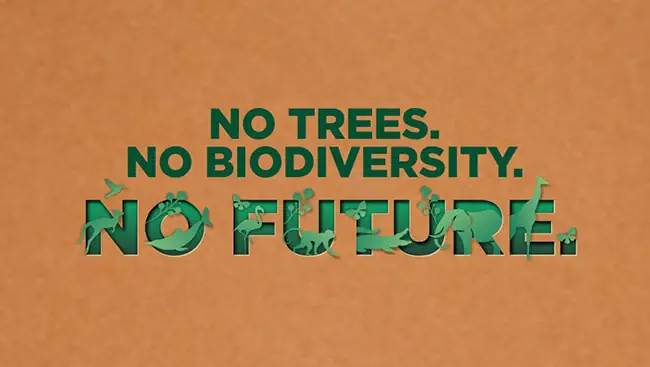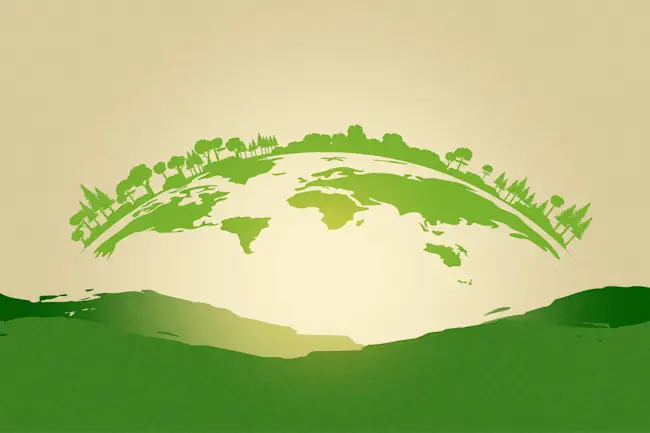Creating a Greener Future: The Miyawaki Way
- Copy
The wonders that we see in nature never cease to amaze us! From towering redwoods to the tiniest insects – we are treated to a vibrant tapestry of life. This incredible diversity, known as biodiversity, underpins the health of our planet and our own well-being. But as we witness every day, this biodiversity faces unprecedented threats. On May 22nd, the International Day for Biological Diversity, the world comes together to raise awareness and inspire action.
Aditya Birla Group's leadership in environmental stewardship isn't just about preserving biodiversity; but actively using innovative techniques to cultivate it alongside their business operations.

A key part of our strategy is the Miyawaki method, a revolutionary afforestation technique named after its developer, Japanese ecologist Akira Miyawaki.
Greening areas with the Miyawaki method
The Miyawaki method goes beyond simply planting trees. There are many reasons why this is now the most popular way of re-greening an area.
- Native Species: The Miyawaki method emphasises planting only plant species native to the local area. This fosters a more resilient and naturally balanced ecosystem. This method ensures a higher success rate and helps the existing ecosystem of birds and pollinators to flourish.
- Dense Plantation: Unlike traditional methods with spaced-out trees, Miyawaki forests involve planting a high number of seedlings close together – about three seedlings per square metre. This method is used to stimulate dense growth and resemblance to a forest. This competition for sunlight encourages trees to grow more vertical and less laterally.
- Soil Preparation: The soil is enriched with organic matter to provide essential nutrients for the fast-growing trees and weeds are removed for up to three years. Post this period, the area is allowed to grow naturally and fight weeds by itself.
A green model for sustainable growth
Aditya Birla Group exemplifies how corporations can embrace innovative solutions for environmental sustainability. Their successful implementation of the Miyawaki method at various locations like Hindalco's CHP area, Grasim's Bharuch project demonstrates the effectiveness of this technique in promoting biodiversity and habitat restoration.

Hindalco: Transforming industrial landscapes
The Group’s metal flagship, Hindalco successfully implemented the Miyawaki forest method at Aditya Aluminium Coal Handling Plant (CHP) using their three-pronged approach towards biodiversity management – prioritising sites, developing biodiversity management plans, and then implementing these plans. Aditya Aluminium CHP was a high dust location and was in desperate need of being re-greened. Now, the mini forest boasts of a 99.5% plant survival rate and is now a haven for butterflies and other pollinators. It also boasts of a plantation of 5,000 saplings of the endangered Indian rosewood specie. Emboldened by this success, Hindalco now plans to extend this idea of Miyawaki forests to other plants in Renukoot, Renusagar, and Mahan. So far, Hindalco has a green cover of 5,460 acres with 417,873 trees planted in FY2022-23. The Bagru mine was reclaimed to transform into a vibrant valley of flowers with 1,400 saplings of flowering species like the Chinese Rose, Peace Lilly, Rongon, among others.
Grasim: Greening with local communities
Grasim Industries is another example of success achieved through Miyawaki forests methodology. The company partnered with a renowned forest creator, Dr RK Nair, to re-green a two-acre plot in Bharuch, Gujarat. They called this area Grasim Van and Miyawaki Forest. They have planted more than 68,000 trees and these areas have more than 80 different species of trees, bushes and small plants. Supporting them in this endeavour are local women who helped in the plantation process. This helped promote skill development and generated employment in the region too.
Ultratech: Multiplying the green cover
Ultratech, India’s largest cement manufacturer have begun actively implementing the Miyawaki forest method at various locations. Their biodiversity policy, in alignment with the Group, is based on the No Net Loss approach. They work to ensure there is no negative impact to biodiversity because of ongoing operations. To achieve this goal, they have adopted the Miyawaki forest method in three plants – Bela Cement works in Rewa (MP) has planted over 6,000 trees across 7,500 square feet of land; Gujarat Cement Works in Amreli (Gujarat) has planted 1,083 trees and plans to add 2,000 more; and Vikram Cement Works in Neemuch district (MP) has planted 573 trees and collaborated with the Uttar Pradesh Forest department.
Aditya Birla Group’s commitment to environmental responsibility through the Miyawaki method of reforestation has shown encouraging results. They have seen faster growth results resulting in improved air quality and carbon sequestration across all sites. There has been a significant boost to biodiversity that has enriched the surrounding environment and helped the locals in the area.
The Group's commitment to pave the way for a greener future is further amplified through several other sustainability initiatives. Stay tuned to know more on World Environment Day on June 5th.
Mr. Sandeep Gurumurthi
Group Head, Communication & Brand
Aditya Birla Management Corporation Pvt. Ltd.
Call: +91-22-6652-5000 / 2499-5000
Fax: +91-22-6652-5741 / 42

















